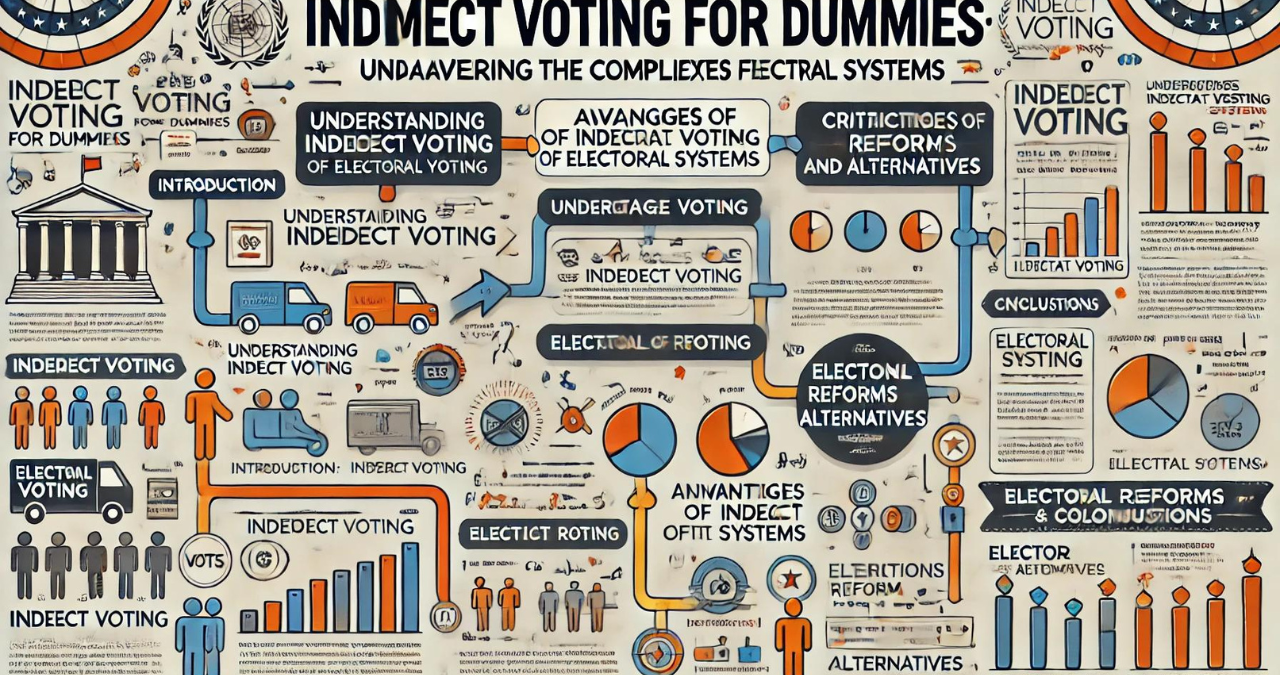Introduction
“Indirect Voting for Dummies” is an essential guide for those new to indirect voting in democratic systems. Unlike direct voting, where citizens vote directly for their preferred candidates or policies, indirect voting involves electing representatives who then make significant decisions on behalf of the electorate. This article seeks to simplify and explain the complexities of these types of electoral systems.
Understanding Indirect Voting
Indirect voting systems are diverse, but they all share a common feature: they require a secondary layer where elected officials vote on critical issues or leadership roles. The “Indirect Voting for Dummies” guide explains how these systems function across different contexts.
1. The Basics of Indirect Voting “Indirect Voting for Dummies” describes indirect voting as a method used primarily where a higher level of decision-making is deemed necessary. For instance, it’s commonly employed in the election of national leaders, where an additional deliberative step is believed to help stabilize governance.
2. Examples of Indirect Voting
- Electoral College in the United States: This is a prime example of indirect voting where the electorate votes for delegates who then vote for the president.
- German Bundesrat: In this system, representatives from state governments have a hand in federal legislative processes.
- Papal Conclaves: A religious example where Cardinals, appointed by the Pope, choose his successor.
Advantages of Indirect Voting
“Indirect Voting for Dummies” also outlines several benefits of these systems:
- Reduces the Impact of Extremism: Having an intermediate body reduces the chances of extreme views directly influencing significant decisions.
- Enhances Stability: It provides a buffer against the rapid shifts in public opinion that can destabilize governance.
- Promotes Deliberation: The layered process allows for more considered decisions that can account for long-term impacts.
Criticisms of Indirect Voting
Despite its advantages, as “Indirect Voting for Dummies” explains, there are significant criticisms:
- Lack of Direct Control: Voters may feel disconnected from the political process when their influence is diluted.
- Complexity: The system can be opaque, making it hard for citizens to understand how their votes impact outcomes.
- Risk of Elitism: There may be concentrated power among a small group of elites who may not always represent the public’s interest.
Electoral Reforms and Alternatives
The “Indirect Voting for Dummies” guide considers various reforms to address these criticisms:
- Direct Elections: Some advocate for more straightforward electoral systems where direct votes are cast for all positions.
- Mixed Systems: There are proposals to blend direct and indirect elements to balance representation and stability.
- Enhanced Transparency: Making the indirect voting process more transparent can help increase public trust and participation.
Conclusion
The “Indirect Voting for Dummies” guide emphasizes that indirect voting is a complex yet integral part of democratic governance worldwide. Understanding its mechanisms, benefits, and drawbacks is crucial as societies debate and evolve their electoral systems.
Frequently Asked Questions (FAQs)
1. What exactly is indirect voting as described in ‘Indirect Voting for Dummies’?
Indirect voting involves electing representatives who vote on significant decisions or leadership roles rather than citizens voting directly on these issues.
2. How does ‘Indirect Voting for Dummies’ explain the use of indirect voting systems?
The guide explains that these systems add a level of deliberation and stability to the decision-making process, particularly in sensitive or high-stakes decisions.
3. What are some examples of indirect voting systems mentioned in ‘Indirect Voting for Dummies’?
Examples include the U.S. Electoral College, Germany’s Bundesrat, and the election of a new Pope through Papal Conclaves.
4. What reforms does ‘Indirect Voting for Dummies’ suggest for indirect voting systems?
Reforms include moving towards more direct voting systems, creating hybrid systems, and increasing the transparency of the electoral process.
5. According to ‘Indirect Voting for Dummies,’ what are the main criticisms of indirect voting systems?
The main criticisms include the potential disconnection of voters from the decision-making process, the complexity of the system, and the risk of power being held by a small elite.
You May Also Read: https://trendbullion.com/teenthailand_11_sc1/




